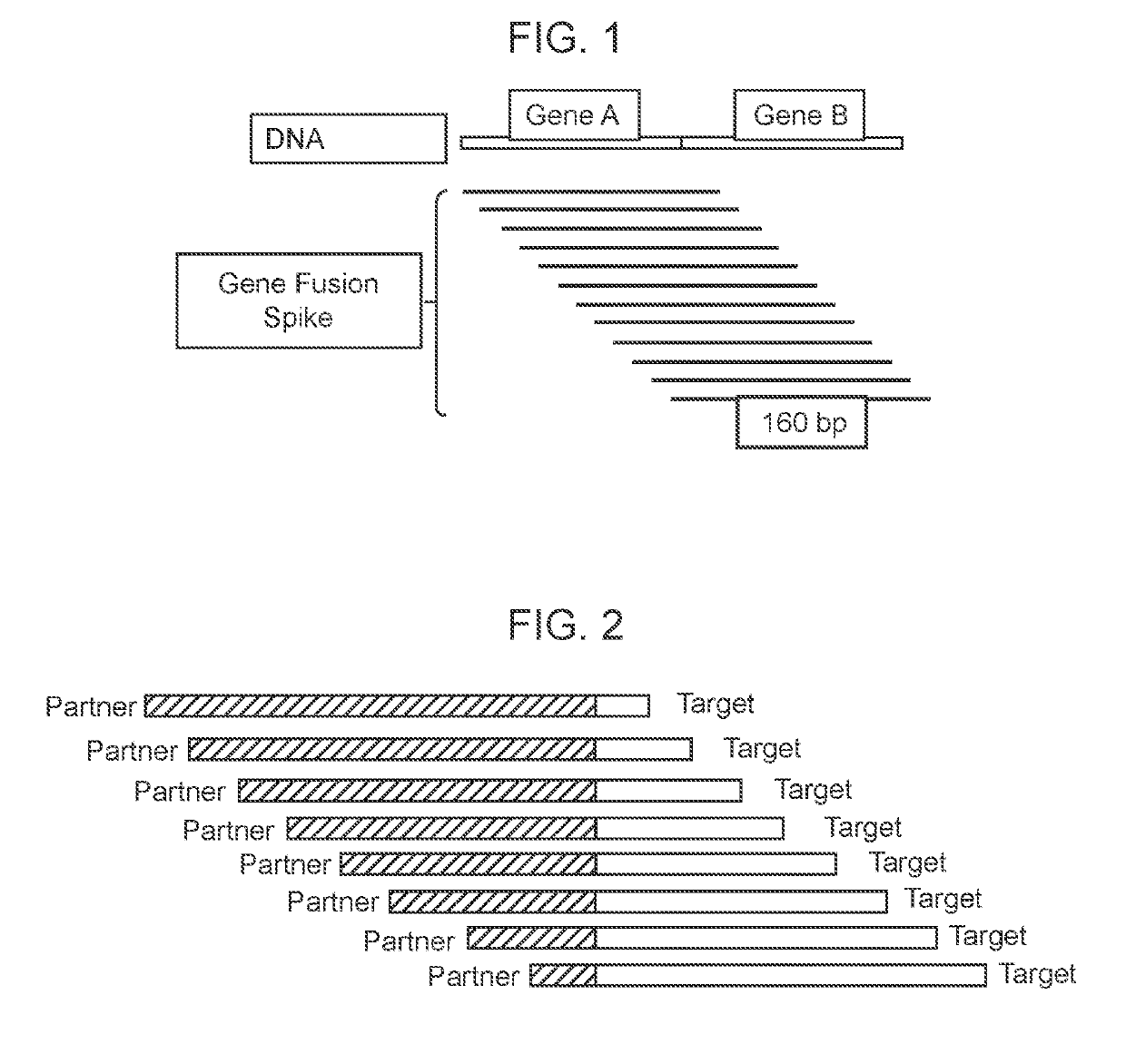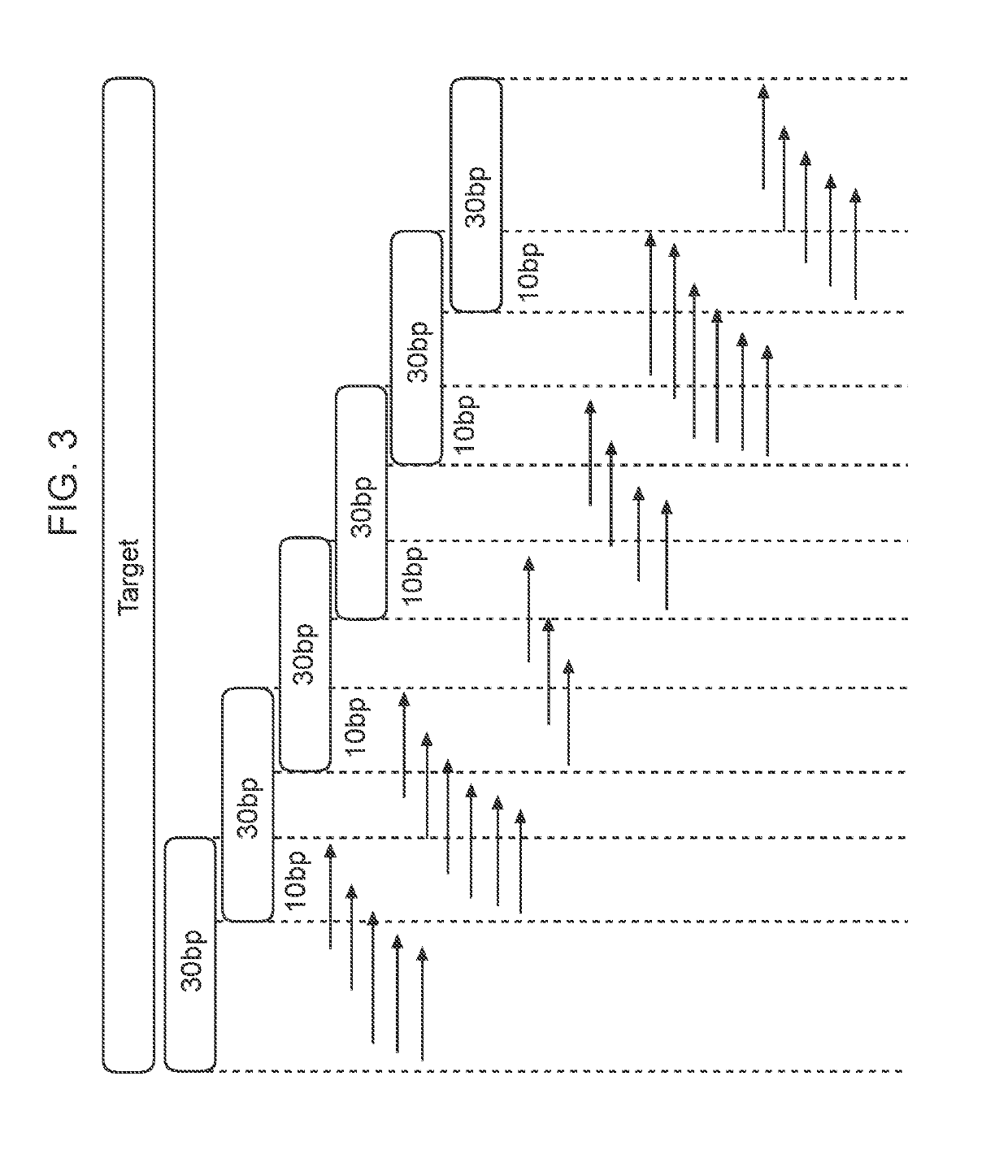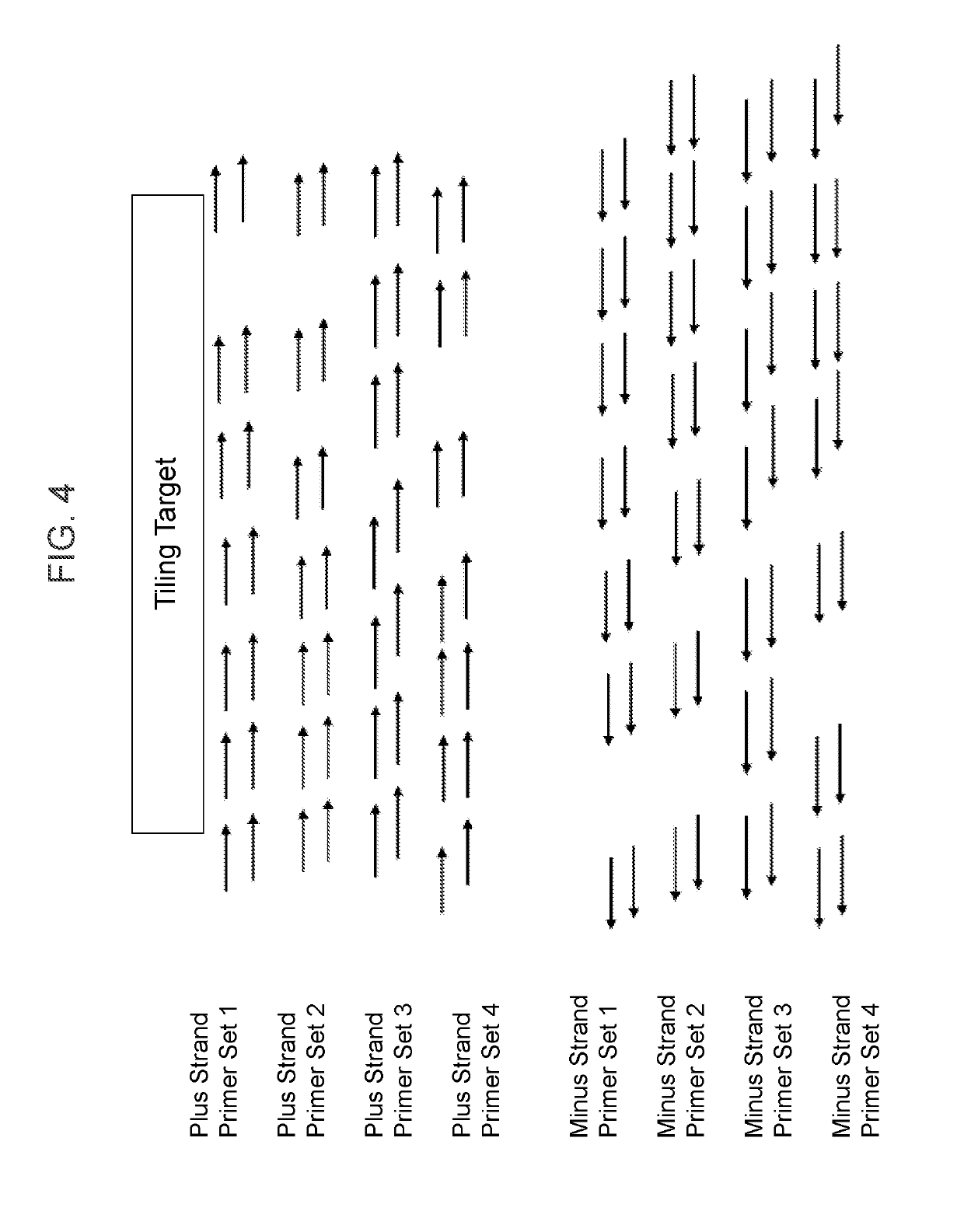Compositions and methods for detection of nucleic acid mutations
a nucleic acid and fusion technology, applied in the field of methods for detecting nucleic acid mutations and fusions, can solve the problems of high invasive sampling, inability to apply fusion detection in plasma, and not without risk of potentially contributing to metastasis or surgical complications
- Summary
- Abstract
- Description
- Claims
- Application Information
AI Technical Summary
Benefits of technology
Problems solved by technology
Method used
Image
Examples
example 1
ng Fusion Gene Breakpoints for Tiling Analysis
[0155]Provided herein is an example of how a series of tiled primers can be designed and selected for use in methods of the present invention, especially methods for detecting a gene fusion using a one-side nested PCR reaction. The design of tiled primers for detection of gene fusions began with mapping COSMIC fusion transcripts to genomic coordinates (i.e., translocations). However, use of transcript-level information was found to induce uncertainty in breakpoint location because rearrangements were largely intronic (and so spliced out of the transcripts). Therefore, it was necessary to cover a range of sequence for each reported fusion based on exon boundaries. Identification of molecular signatures can assist in the development of a cancer detection panel for identifying gene fusions and can be applied beyond lung cancer to other cancers and diseases, e.g., ALK haemopoetic and lymphoid tissue, RET in thyroid cancer.
[0156]The evaluated...
example 2a
t of Synthetic Fusion Standards
Design of a Gene Fusion Spike
[0162]A fusion spike, as used herein, refers to an artificially synthesized gene fusion, e.g., CD74:Ros1, NMP1:Alk1 (×2) and TPM4:Alk1. The first gene is the Partner (e.g., CD74, NMP1 and TPM4) and the later the Target (Ros1, ALK1 (two sets) and Alk1). The fusion spikes were designed to correspond to the average length of cfDNA, selecting 160 bp in length. The design makes use of nine primers tiled across the 160 fusion spike “target” as illustrated in FIG. 1.
[0163]Fusion spikes were designed to span the ‘junction’, as used herein, can refer to the fusion breakpoint between the two fusion partners. To illustrate, consider the following example, there are two genes A and B composed of sequence {a_i} and {b_i}, fusions occur between these two genes. To generate a fusion spike, we first identified the location of the breakpoint in each gene and then construct the spike S:
S=a_{i−m}, . . . ,a_i,b_j, . . . ,b{j+n}
where the total ...
example 2b
t of Synthetic Fusion Standards
[0164]The design of synthetic fusion spikes was done in order to develop a system that allowed detecting of gene fusion profiles. Identification of a gene fusion profile can assist to identify the fused genomic sequence for rearrangements following sequencing of the fused genomic DNA. The genomic sequence (suspected of having a gene fusion) was used to construct tiled primer template synthetic oligonucleotides that tiled across each target sequence containing the breakpoint as tiled fusion spikes, each of 160 bp in length. FIG. 1 illustrates the tiling of these synthetic oligonucleotides to construct fusion spikes.
[0165]A review of the literature for published genome sequences of translocations was conducted to identify gene fusion products. This resulted in the selection of six regions containing gene fusions (5 ALK, 1 ROS) followed by bioinformatics computations to identify the corresponding genome location to unify the results.
[0166]Following genomi...
PUM
| Property | Measurement | Unit |
|---|---|---|
| ionic strength | aaaaa | aaaaa |
| ionic strength | aaaaa | aaaaa |
| ionic strength | aaaaa | aaaaa |
Abstract
Description
Claims
Application Information
 Login to View More
Login to View More - R&D
- Intellectual Property
- Life Sciences
- Materials
- Tech Scout
- Unparalleled Data Quality
- Higher Quality Content
- 60% Fewer Hallucinations
Browse by: Latest US Patents, China's latest patents, Technical Efficacy Thesaurus, Application Domain, Technology Topic, Popular Technical Reports.
© 2025 PatSnap. All rights reserved.Legal|Privacy policy|Modern Slavery Act Transparency Statement|Sitemap|About US| Contact US: help@patsnap.com



